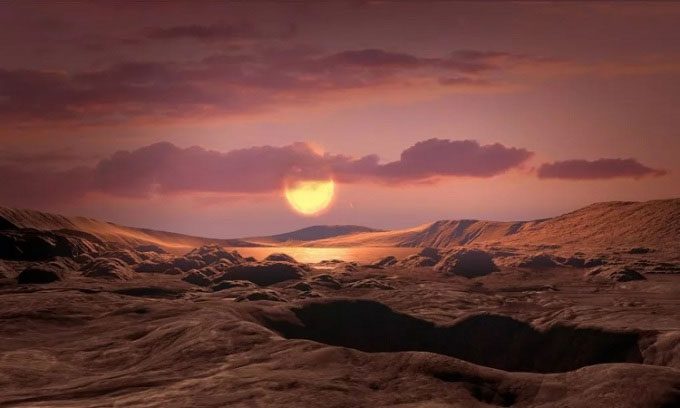Scientists have discovered an exoplanet named after a wolf, orbiting a red dwarf star located 31 light-years away, that may be very similar to Earth.
This exoplanet is called Wolf 1069b, orbiting its host star Wolf 1069, as studied by a team of scientists led by Dr. Diana Kossakowski from the Max Planck Institute for Astronomy (MPIA) in Germany.

Predicted landscape on Wolf 1069b – (Graphic by NASA).
“When we analyzed the star’s data, we detected a clear signal with a low amplitude that appears to be a planet with a mass close to that of Earth. It orbits the star every 15.6 days at a distance equivalent to 1/15 of the distance between Earth and the Sun,” Dr. Diana Kossakowski stated.
According to Science Alert, since Wolf 1069 is a red dwarf star—a type of star much cooler than the Sun—being close to its host star does not make this planet too hot. In fact, it places it right in the “Goldilocks zone” of the star.
In the Goldilocks zone, planets receive just the right temperature to have a temperate climate like Earth, with water capable of existing in liquid form.
This planet, which is about 1.36 times the size of Earth, receives about 65% of the radiation that Earth does.
At this level, the feasibility of life will depend on its atmosphere. Scientists plan to investigate this in the next steps, but are currently hindered by the limitations of Earth’s technology, which may require several years or even a decade to advance further.
If it is “a bare Wolf 1069b”—similar to Mercury—it would have a temperature of minus 23 degrees Celsius and be challenging for life. However, if it possesses a thick and beautiful atmosphere like Earth, it could be a milder and cooler world compared to our increasingly harsh planet.
This research was recently published in the scientific journal Astronomy & Astrophysics.


















































